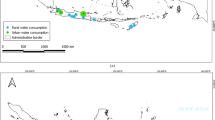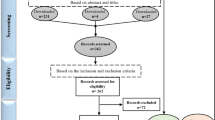Abstract
This paper reviews Water Loss Assessment methods in water supply systems. There’re three main methods: Minimum Night Flow (MNF) analysis, Bursts And Background Estimates (BABE), and Top-Down Water Balance. MNF analysis provides actual measurements whose accuracy can be evaluated. It requires intensive field work, though. The limitation of MNF application is the sensitivity of two parameters; average pressure which is rarely accurate, and estimation of the night consumption. Assessing real losses with the factors generated by the BABE model should not be conducted unless there is no other option due to its excessive assumptions. Instead, the method should be a supplementary tool to break down the volume of real losses into its sub-components. The Top-Down Water Balance is neither pressure-dependent nor extensive-field-work method. However, its assumptions of apparent losses aren’t appropriate for all utilities. The lack of an objective methodology for estimating unauthorized consumption is a major limitation, and research on its estimation is demanding.



Similar content being viewed by others
References
Alegre H, Hirner W, Baptista J, Parena R (2000) Performance indicators for water supply services. IWA Manual of Best Practice ISBN 900222272.
Alkasseh J, Nordin Adlan M, Abustan I, Abdul Aziz H, Hanif A (2013) Applying minimum night flow to estimate water loss using statistical modeling: a case study in Kinta Valley, Malaysia. Water Resour Manag 27:1439–1455
Almandoz J, Cabrera E, Arregui F, Cabrera JE, Cobacho R (2005) Leakage assessment through water distribution network simulation. J Water Resour Plan Manag 131:458–466
Al-Omari A (2013) A methodology for the breakdown of NRW into real and administrative losses. Water Resour Manag 27:1913–1930
Al-Washali T (2011) Non-revenue water management in Sana’a water distribution system. Master Dissertation. Cologne University for Applied Sciences
American Water Works Association (AWWA) (2009) Water audits and loss control programs. (3rd ed.), M36 Publication Rewrite, Denver, CO: AWWA Publication, USA
Buchberger SG, Nadimpalli G (2004) Leak estimation in water distribution systems by statistical analysis of flow readings. J Water Resour Plan Manag 130:321–329
Chisakuta S, Mayumbelo K, Mulenga K, Simbeye I, Wegelin W, Mckenzie R, Hamilton S, Anders D (2011) non-revenue water: trainers manual. Wave Pool Zambia Imprint. German Foundation for International Cooperation (GIZ), Germany
Claudio K, Couallier V, Leclerc C, Gat YL, Saracco J (2015) Consumption estimation with a partial automatic meter reading deployment. Water Sci Technol Water Supply 15(1):50–58
Criminisi A, Fontanazza CM, Freni G, La Loggia G (2009) Evaluation of the apparent losses caused by water meter under-registration in intermittent water supply. Water Sci Technol: WST 60(9):2373–2382
Fanner P (2004) Assessing real water losses: a practical approach. Water 21(4):49–50
Fanner P, Thornton J (2005) The importance of real loss component analysis for determining the correct intervention strategy. Proceedings of IWA Water Loss 2005 Conference, Halifax, Nova Scotia, Canada, September 2005
Fantozzi M, Lambert A (2010) Legitimate night use component of minimum night flows initiative. A presentation in the Proceedings of IWA Specialized Conference: Water Loss 2010, Brazil, São Paulo, 6–9 June, 2010
Farley M, Trow S (2007) Losses in water distribution networks; a practitioner’s guide to assessment, monitoring, and control, 2nd edn. International Water Association Publishing, UK
Farley M, Wyeth G, Ghazali Z, Istandar A, Singh S (2008) The manager’s non-revenue water handbook: a guide to understanding water losses. United States Agency for International Developing and Ranhill Utilities Berhad, Malaysia/Thailand
Frauendorfer R, Liemberger R (2010) The issues and challenges of reducing non-revenue water. Mandaluyong City, Philippines: Asian Development Bank. ISBN 978–92–9092-193-6, Publication Stock No. RPT102319, the Philippines
Giustolisi O, Savic D, Kapelan Z (2008) Pressure-driven demand and leakage simulation for water distribution networks. J Hydraul Eng 134(5):626–635
Hamilton S and McKenzie R (2014) Water management and water loss. (1st ed.) Alliance House London, UK. ISBN 9781780406367, IWA Publishing
Høgh K (2014) Assessment of Real Losses from Minimum Night Flows. Proceedings of IWA Specialized Conference: Water Loss 2014, Austria, Vienna, 30 March – 2 April, 2014
Kingdom B, Liemberger R, Marin P (2006) The challenge of reducing non-revenue water (NRW) in developing countries: How the private sector can help: A look at performance-based service contracting. Water Supply and Sanitation Sector Board Discussion Paper, Series Paper NO. 8. The World Bank Group
Lambert A (1994) Accounting for losses: the bursts and background concept. J IWEM 8, April
Lambert A (2001) What do we know about pressure: leakage relationships in distribution systems?. Proceedings of IWA Conference System Approach to leakage control and water distribution system management. Brno, Czech Republic, 16–18 May 2001
Lambert A (2002) International report: water losses management and techniques. Water Sci Technol Water Supply 2(4):1–20
Lambert A (2003) Assessing non-revenue water and its components: a practical approach. Water 21: Magazine of the International Water Association, Special Series of IWA Water Loss Task Force: World Best-Practice in Water Loss Assessment, and Reduction Strategies, August: 50–51
Lambert A (2009) Ten years’ experience in using the UARL formula to calculate infrastructure leakage index. Proceedings of IWA water loss 2009 Conference, Cape Town, South Africa, March 2009
Lambert A, Hirner W (2000) Losses from water supply systems: standard terminology and recommended performance measures. IWA website. http://www.joat.co.za/IWA%20Blue%20Pages.pdf. Accessed 15 March 2016
Lambert A, McKenzie R (2002), Practical experience in using infrastructure leakage index. Proceedings of IWA 2002 conference. Cyprus, Lemesos 2-4 November 2002. ISBN 9963–8759–0-4
Lambert A, Morrison J (1996) recent developments in application of ‘bursts and background estimates’ concepts for leakage management. J. CIWEM. 10, April
Lambert A, Taylor R (2010) Water loss guidelines, a guideline for the New Zealand water and wastes association. Water New Zealand, New Zealand
Lambert A, Brown T, Takizawa M, Weimer D (1999) A review of performance indicators for real losses from water supply systems (ISSN 0003-7214). Aqua 48(6):227–237
Lambert A, Charalambous B, Fantozzi M, Kovac J, Rizzo A, St John S G (2014) 14 years’ experience of using IWA best practice water balance and water loss performance indicators in Europe. Proceedings of IWA Specialized Conference: Water Loss 2014, Austria, Vienna, 30 March – 2 April, 2014
Liemberger R, Farley M (2004) Developing a non-revenue water reduction strategy, part 1: Investigating and assessing water losses. Proceedings of IWA 4th World Water Congress, Morocco, Marrakech, 19–24 September 2004
McKenzie R, Buckle H, Wegelin W, Meyer N (2003) Water demand management cookbook. Pretoria, South Africa: Water Resource Planning and Conservation. ISBN 0–620-30734-X
Mimi Z, Abuhalaweh O, Wakileh V (2004) Evaluation of water losses in distribution networks: Rammallah as a case study. Water Sci Technol Water Supply 4(3):183–195
Morrison J, Tooms S, Rogers D (2007) District metered areas: guidance notes. IWA water loss task force. IWA Publishing, London, United Kingdom
Mutikanga H (2012) Water loss management: tools and methods for developing countries. PhD Dissertation, Delft University of Technology and UNESCO-IHE. Netherlands: CRC Press/Balkema, ISBN: 9780415636483.
Mutikanga H, Sharma S, Vairavamoorthy K (2011) Assessment of apparent losses in urban water systems. Water Environ J 25(3):327–335
Palau C, Arregui F, Carlos M (2012) Burst detection in water networks using principal component analysis. J Water Resour Plan Manag 138(1):47–54
Pillot J, Renaud E, Clauzier M (2014) a method of analysing night consumption in DMAs with high levels of seasonal variation. Proceedings of IWA Specialized Conference: Water Loss 2014, Austria, Vienna, 30 March – 2 April, 2014
Puust R, Kapelan Z, Savic D, Koppel T (2010) A review of methods for leakage management in pipe networks. Urban Water J 7(1):25–45
Radivojevic D, Milicevic D, Blagojevic B (2008) IWA best practice and performance indicators for water utilities in Serbia- case study Pirot. Factua Universitatis: Series of Architecture and Civil Engineering 6(1):37–50
Salim H, Manurung N (2012) Bottom up water balance estimation: applications and limitations. Proceedings of IWA Specialized Conference: Water Loss 2012, Italy, Ferrara, 23–25 May, 2012
Seago C, Bhagwan J, McKenzie R (2004) Benchmarking leakage from water reticulation systems in South Africa. Water SA 30(5):25–32
Tabesh M, Asadiyani Y, Burrows R (2009) An integrated model to evaluate losses in water distribution systems. Water Resour Manag 23(3):477–492
Thornton J, Sturm R, Kunkel G (2008) Water loss control manual. The McGraw-Hill, USA
United States Environmental Protection Agency (EPA) (2009) Control and mitigation of drinking water losses in distribution systems. EPA 816-D-09-001. Washington DC
United States Environmental Protection Agency (EPA) (2013) Water audits and water loss control for public water systems. Office of Water (4606 M), EPA 816-F-13-002
Vermersch M, Rizzo A (2008) Designing an action plan to control non-revenue water. Water 21 (10.2): 39–41. IWA Publishing
Werner M, Maggs I, Petkovic M (2011) Accurate measurement of minim night flows for water loss analysis. Proceedings of the Fifth Annual WIOA NSW Conference: Water Industry Engineers & Operators Conference, Newcastle, Exhileracing Events Centre, 29–31 March 2011
WHO and UNICEF (2014) Progress on sanitation and drinking water: 2014 update. World Health Organization and United Nations Children’s Fund, Geneva, Switzerland. ISBN 978 92 4 150724 0
Winarni W (2009) Infrastructure leakage index (ILI) as water losses indicator. Civil Engr Dimension 11(2):126–134
Wu ZY, Farley M, Turtle D, Kapelan Z, Boxall J, Mounce S, Dahasahasra S, Mulay M, Kleiner Y (2011) Water loss reduction, 1st edn. Bentley Institute Press, USA
Acknowledgments
This study was funded under the Netherlands Fellowship Program (NFP), and a joint NICHE 27 Project of MetaMeta Research and Water and Environment Center at Sana’a University.
Author information
Authors and Affiliations
Corresponding author
Rights and permissions
About this article
Cite this article
AL-Washali, T., Sharma, S. & Kennedy, M. Methods of Assessment of Water Losses in Water Supply Systems: a Review. Water Resour Manage 30, 4985–5001 (2016). https://doi.org/10.1007/s11269-016-1503-7
Received:
Accepted:
Published:
Issue Date:
DOI: https://doi.org/10.1007/s11269-016-1503-7




